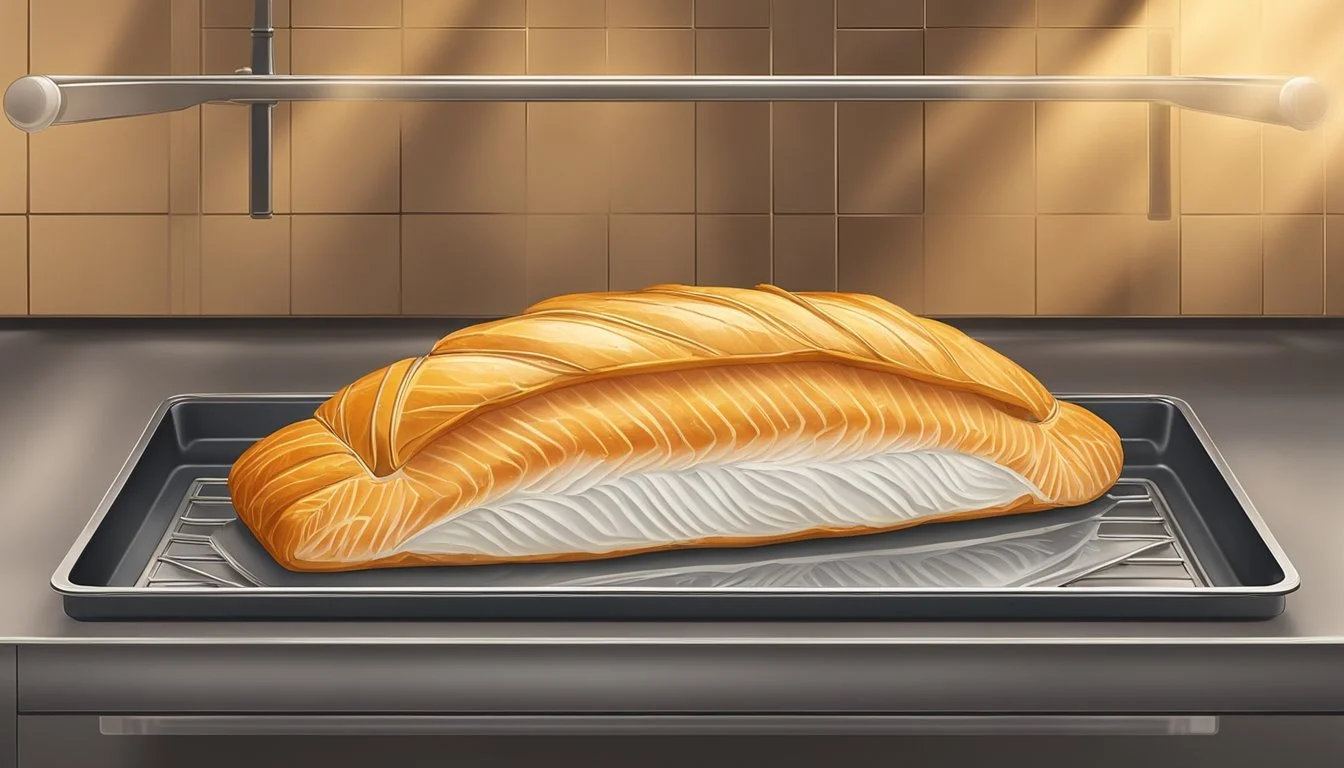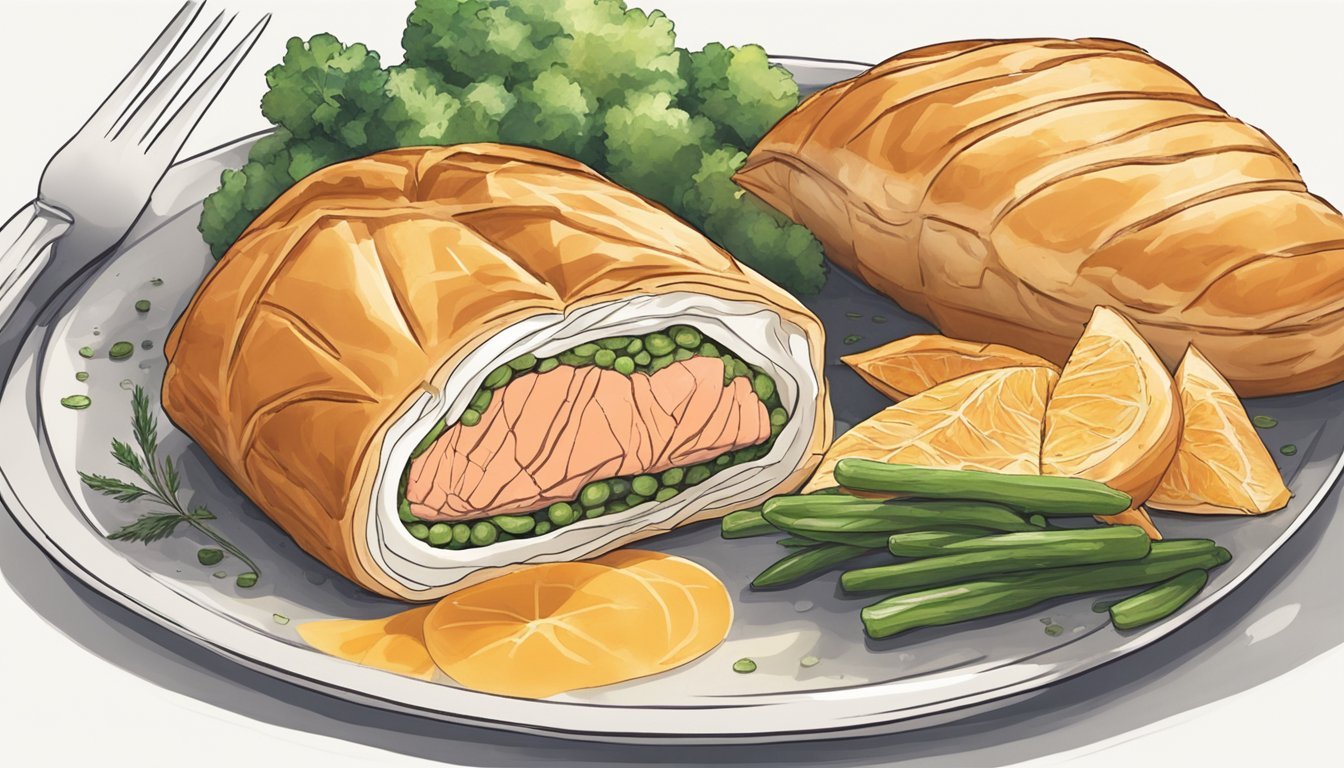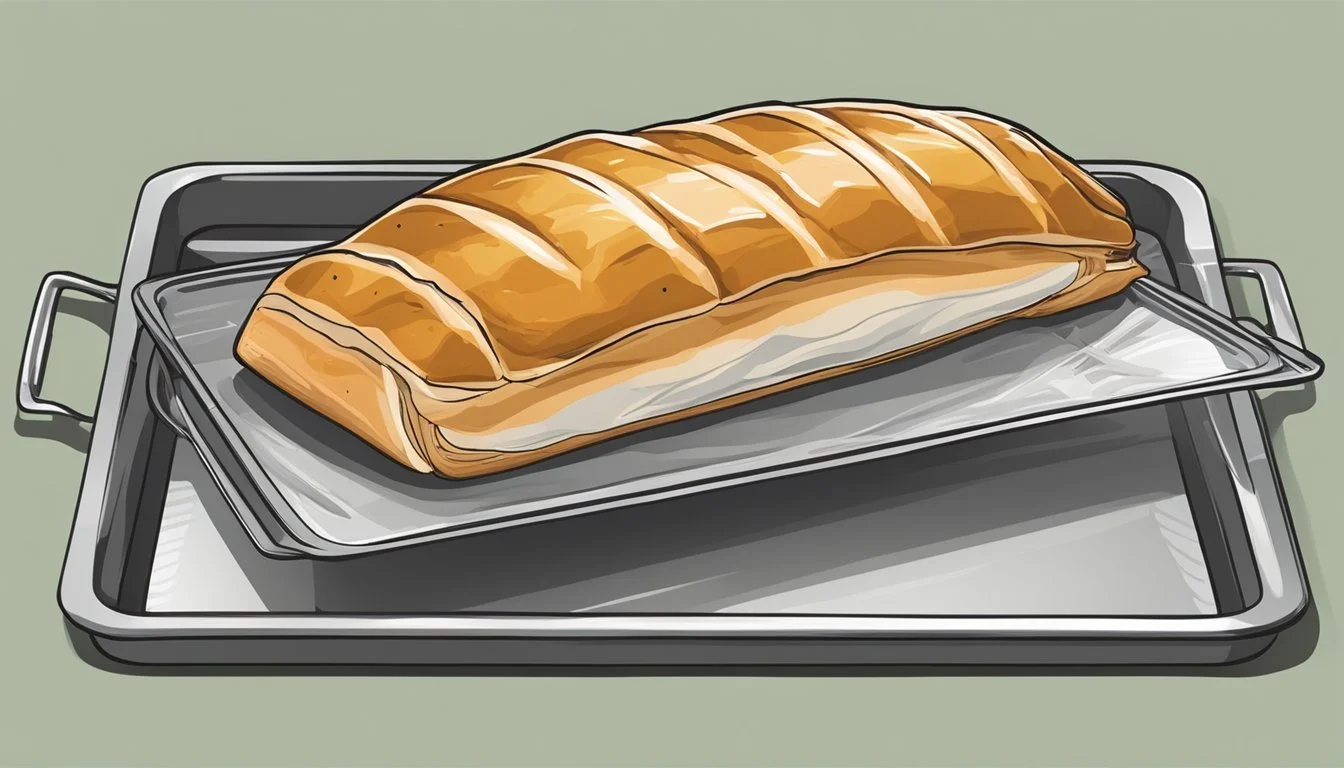Best Way to Reheat Salmon Wellington
Ensuring a Perfect Flaky and Buttery Experience
Salmon Wellington, a distinguished dish known for its succulent fish center and a buttery, flaky crust, presents a bit of a challenge when it comes to reheating leftovers without sacrificing texture and flavor. The key to reviving this culinary masterpiece lies in a method that retains the moisture of the Salmon while ensuring that the pastry retains its crispness. To achieve the best results, one must approach the reheating process with care, as the delicate balance of the dish's components can easily be disrupted, turning a once delightful meal into a disappointing one.
Conventional wisdom suggests that the oven is the most suitable tool for reheating Salmon Wellington. The even distribution of dry heat helps to restore the pastry to its original glory, making it just as appealing as it was when first baked. An oven preheated to a moderate temperature, typically around 350°F (175°C), is recommended for this purpose. It is also advisable to remove the Wellington from the refrigerator to bring it to room temperature before reheating, as this step assists in even heating throughout the dish. Lined with parchment paper, a baking sheet becomes the perfect vessel to support the Wellington during the reheating cycle, protecting it from direct heat and facilitating an easy cleanup.
Understanding Salmon Wellington
Perfecting the art of reheating Salmon Wellington begins with a comprehension of its unique characteristics. This dish's appeal lies in its flaky texture and richly flavored components that delight the palate.
Importance of Texture and Crust
The hallmark of a well-crafted Salmon Wellington is the juxtaposition of its crispy crust against the tender, moist salmon inside. Achieving this balance during reheating is crucial as it significantly impacts the dish's sensory appeal. The texture of the crisp pastry and the aroma released upon slicing into the Wellington are major contributors to its enjoyment.
Overview of Salmon as a Protein
Salmon is a high-quality protein rich in omega-3 fatty acids, known for their health benefits and contribution to the salmon's natural flavor. In Salmon Wellington, the salmon must be succulent and cooked to perfection to complement the buttery crust. These aspects make the dish not only delicious but nutritious.
Storing Leftover Salmon Wellington
Proper storage is key to maintaining the quality of leftovers. It is advised to store the Salmon Wellington in an airtight container or tightly wrapped in plastic wrap to preserve its texture and aroma. For best results, one should place the wrapped Wellington on a parchment paper-lined tray when reheating to sustain the crispy skin and flaky pastry texture.
Preparation for Reheating
Effectively reheating Salmon Wellington begins with meticulous preparation to ensure the pastry remains flaky and the fish retains its moisture. The two critical steps involve the preheating of your oven and the wrapping technique applied to the Salmon Wellington for moisture retention.
Preheating Procedures
It is essential to preheat the oven to 350°F (175°C) to establish a conducive environment for reheating. The consistent and moderate temperature is a key parameter that will allow the salmon to warm evenly without compromising the texture:
Step 1: Turn on the oven.
Step 2: Set the temperature to 350°F (175°C).
Wrapping Techniques to Retain Moisture
The way the Salmon Wellington is wrapped can profoundly influence how it retains moisture during the reheating process. Using aluminum foil and parchment paper are effective methods:
Foil Wrapping:
Butter or Oil: Brush the foil with a light coating of olive oil or melted butter to prevent sticking.
Wrap the Salmon: Cover the Wellington with aluminum foil tightly to lock in moisture.
Parchment Paper Technique:
Lay out a sheet of parchment paper on the baking sheet.
If desired, one may place a moistened paper towel under the Wellington to add extra moisture.
By adhering to these procedures, one can achieve a Salmon Wellington that's deliciously reheated with a well-preserved texture and moisture.
Reheating Salmon Wellington in the Oven
Reheating Salmon Wellington requires a careful balance to maintain its flaky texture and rich crust without drying out the delicate fish inside. The following methods provide specific guidance to achieve an evenly warmed and enjoyable dish.
Oven Reheating Method
To reheat Salmon Wellington effectively, one needs to use their oven, set to a moderate temperature to ensure even heating. Several steps should be followed:
Preheat your oven to 350°F (175°C).
Remove the Salmon Wellington from the refrigerator and take it out of its wrapping.
Place the dish on a baking sheet lined with parchment paper. This will prevent sticking and allow for better heat distribution.
Bake until the internal temperature of the salmon reaches 145°F (63°C). A thermometer can be used to check this accurately.
Heating time can be around 15-20 minutes, depending on the size of your Wellington.
Preventing Drying Out or Overcooking
The key to reheating Salmon Wellington is to ensure it doesn't lose moisture or become overcooked, which would ruin its texture.
Low and Slow: Opt for a lower temperature, if time allows. Some prefer heating at 275°F (135°C) to 300°F (150°C) for a gentle warming process.
Moisture: To prevent drying out, one might cover the Wellington with foil. Alternatively, add a splash of water beneath the foil to create steam.
Don't Overheat: Check the Salmon Wellington periodically. Once it's warmed through fully, it should be removed from the oven promptly to prevent overcooking.
Resting: Allowing the Wellington to rest for a few minutes after removing it from the oven helps redistribute the juices and heat, ensuring the salmon is moist and flavorful.
Alternative Reheating Techniques
When reheating Salmon Wellington, preserving its delicate texture and flavor is paramount. This section explores various methods beyond the conventional oven reheating that can also yield satisfactory results if executed carefully.
Using a Microwave With Caution
Reheating in a microwave is fast, but one must be particularly cautious to avoid a rubbery texture. To mitigate this, one should set the microwave to a low setting and heat in short intervals, checking the progress frequently. Placing a cup of water inside during reheating can also help prevent the salmon from drying out.
Stovetop Reheating
A skillet on the stovetop offers a more controlled reheating environment. One should heat the skillet over medium heat and place the Salmon Wellington skin-side down. A few drops of water or lemon juice can be added before covering with a lid to create steam that will warm the salmon gently without drying it.
Steaming for Moisture Retention
Steaming is an excellent way to retain the moisture of the salmon. Using a steamer over simmering water, one can reheat the Salmon Wellington covered for a few minutes. This technique is particularly effective at preventing the pastry from becoming soggy and the salmon from drying out.
Air Fryer Method for Crispy Skin
An air fryer can reheat the Salmon Wellington effectively while maintaining a crispy crust. The air fryer should be preheated and the salmon placed inside for a few minutes. Monitoring is essential to ensure the pastry does not burn and the salmon stays moist.
Sous Vide for Precision
A sous vide machine reheats with precision, using a water bath set to a specific temperature. This method evenly reheats the salmon without the risk of drying it out. It requires placing the Salmon Wellington in a sous vide-safe bag and submerging it in the water until it reaches the desired temperature.
Serving Reheated Salmon Wellington
When serving reheated Salmon Wellington, it is paramount to consider the accompaniments that will enhance the dish and set realistic expectations about the reheated outcome.
Pairing With Sides
One should serve Salmon Wellington with sides that complement its rich flavors and textures. A suitable accompaniment is a simple arugula salad to add a pepper note, or for starch, consider roasted baby potatoes to echo the heartiness of the fish and pastry. If incorporating smoked salmon as a filling, one might opt for a creamy dill sauce and lemon wedges to cut through the smokiness and rich flavors.
Adjusting Expectations After Reheating
The diner should anticipate that while the Salmon Wellington will be thoroughly heated, the crust may not achieve the same buttery flakiness as when initially baked. A preheated oven to the right temperature (around 350°F or 175°C) is recommended for reheating, and one should monitor closely to avoid overcooking, which could cause the salmon to become dry.
Safety and Best Practices
When reheating Salmon Wellington, safety and best practices are paramount to ensure that the dish retains its flavor while being safe to consume. The key points to consider are the internal temperature during reheating and the proper storage of leftovers.
Checking Internal Temperature
It's crucial to check the internal temperature of Salmon Wellington to ensure it has been reheated to a safe temperature. One should use a thermometer to check that the internal temperature has reached 145°F (63°C), which is the FDA's recommended safe internal temperature for fish.
Insert the thermometer in the thickest part of the salmon fillet.
Make sure it does not touch the crust as this can give an inaccurate reading.
Storage Tips for Leftover Salmon
Leftover Salmon Wellington should be stored with care to maintain freshness and prevent foodborne illness.
Place leftovers in an airtight container or wrap them securely in aluminum foil or plastic wrap.
Store in the refrigerator within two hours of cooking, where it can be kept safely for 1-2 days.
For longer storage, leftovers can be frozen for up to 3 months. However, the texture of the crust may be affected.
When storing fillets separately from the crust, they can also be kept in an airtight container or securely wrapped.
Common Mistakes to Avoid
When reheating Salmon Wellington, certain missteps can compromise the quality of your meal. It is crucial to avoid methods that could turn a flaky delicacy into an overcooked disappointment.
Avoiding Microwave Mishaps
Using a microwave to reheat Salmon Wellington is not recommended. This method can unevenly distribute heat, leading to an overcooked texture in some parts while other sections may remain cold. To prevent drying out, one should strictly steer clear of the microwave when dealing with such a delicate dish.
Tip: Always opt for an oven or a skillet to control the heating process more effectively.
Preventing Overheating and Dryness
Reheating with low heat is key to preserving the Salmon Wellington's moisture and texture. Overcooking is a common issue, often turning the salmon dry and tough.
Temperature: Maintain your oven at a moderate temperature, ideally around 275°F (135°C), to ensure even warming.
Covering: Protecting the salmon with a foil cover will help to trap steam, reducing the chance of drying out.
Time: Limit the time the salmon spends in the oven. Checking the internal temperature frequently can help one determine when the salmon is appropriately reheated to avoid it becoming overcooked.
By heeding these guidelines, the diner can delight in a Salmon Wellington that retains its desirable buttery crust and moist, flaky interior.






